Gluteus Medius Muscle: Anatomy, Origin, Insertion, Function, Exercises
Table of Contents
Introduction
- The Gluteus medius muscle is the large fan-shaped muscle that lies in the posterior hip, extending from the ilium to the proximal femur. Together with the gluteus maximus, gluteus minimus & tensor fascia lata muscles, it belongs to the muscles of the gluteal region.
- The gluteus medius muscle acts on the hip joint producing 2 movements; its anterior part internally rotates the thigh, while the contraction of the whole muscle abducts the thigh. Additionally, the gluteus medius muscle stabilizes the pelvis during standing & walking.
- The Gluteus maximus muscle covers all of the gluteal muscles except for the anterior-superior third of the Gluteus medius. This uncovered part of Gluteus medius is the safe area at which we might apply buttocks Dorso gluteal intramuscular injections.
Origin
- Gluteal, or lateral surface of the ilium between the posterior & anterior gluteal lines & gluteal aponeurosis. This is the large area, extending from the iliac crest above to almost the sciatic notch below.
Insertion
Gluteus medius is divided into 3 portions similar to the deltoid muscle of the shoulder joint.
- Fibers of the posterior part pass forwards & downwards.
- Fibers of the middle portion pass downwards.
- Fibers of the anterior portion pass backward & downward. All Fibers combine to form a flattened tendon that attaches to the posterior & lateral part of the superior portion of the greater trochanter of the femur.
Structure
- The gluteus medius muscle starts, or “originates”, on the outer surface of the ilium between the iliac crest & the posterior gluteal line above, & the anterior gluteal line below; the gluteus medius also arises from the gluteal aponeurosis that covers its outer surface.
- The fibers of the muscle converge into the strongly flattened tendon that inserts onto the lateral surface of the greater trochanter. More specifically, the muscle’s tendon inserts into an oblique ridge that runs downward & forward on the lateral surface of the greater trochanter.
Function
- Gluteus medius is a prime mover of abduction at the hip joint.

- The anterior portion of the Gluteus medius abducts and assists in flexion & medial rotation of the hip.
- The posterior portion of the Gluteus medius abducts, and assists in ext & lateral rotation of the hip.
- In the hip flexion, all portions internally rotate the hip & it has been shown that at 90` of hip flexion the leverage of medial rotation of Gluteus medius is increased eight folds.
- All portions of the Gluteus medius will produce the hip abduction regrades the position of the hip.
- Gluteus medius is an extremely important muscle in maintaining the frontal plane stability of the pelvis it forms with the ipsilateral tensor fascia lata & contralateral quadratus lumborum a lateral fascial sling whose main role is the provide frontal plane stability.
- The Gluteus medius is an important muscle in walking, running & single-leg weight-bearing because it prevents the opposite side of the pelvis from dropping during walking, running & single leg weight-bearing.
- When a limb is taken off the floor the pelvis on that side will tend to drop through loss of support from below.
- Gluteus medius function is to maintain the side of the pelvis that drops therefore allowing the other limb to swing forward for the next step.
- Gluteus medius also supports the pelvis during gait by producing rotation of the hip with assistance from gluteus minimus & tensor fascia lata. Conversely, the hip is supported during the stance phase by acting on the same side.
Relations
- Gluteus medius is a middle gluteal muscle, located deep to the gluteus maximus & superficial to the gluteus minimus. Only the posterior third of the muscle is the covered by gluteus maximus, whereas the larger anterior portion is covered by the deep fascia of the hip. This fascia is sometimes referred to as gluteal aponeurosis. The posterior margin of the muscle is located anterior to the piriformis muscle, & sometimes it may be blended with it.
- The Gluteus medius is related to the branches of the superior gluteal artery & nerve, which run between the adjacent surfaces of the gluteus medius & minimus muscles. This is an important relation, as these vessels & nerves may be damaged during surgical procedures that involve the incision of the gluteus medius.
Variations
- The posterior border is more or less closely united to the piriformis, or some of the fibers end on its tendon.
- The posterior fibers of the gluteus medius contract to produce hip extension, lateral rotation & abduction. During the gait, posterior fibers help to decelerate the internal rotation of the femur at the end of the swing phase.
Nerve Supply
- The gluteus medius is supplied by the superior gluteal nerve (root L4, L5 & S1). Cutaneous supply is mainly provided by L1 & L2.
Blood supply
- The blood supply to the gluteus medius muscle comes from the deep branch of the superior gluteal artery. The tendon, however, is mainly supplied by the trochanteric anastomosis. This anastomosis is formed between the ascending branch of the medial circumflex femoral artery & descending branches of the superior gluteal & inferior gluteal arteries.
Assessment
Palpation
- Find the middle of the iliac crest which is situated above the greater trochanter. Two fingers below are the bulk of gluteus medius. The contraction of the muscle can be felt by the alternate single leg-stands.

Clinical importance of gluteus medius muscle
Inhibition of Glutes medius:
Gluteus Medius is one of the phasic muscles that tend to be inhibited in our body by many causes :
- Standing with body weight shifted mainly on one lower limb with the pelvis swayed sideways & hip joint adducted.
- Sleeping sideline with no billow in between two lower extremities will lead to the top leg being flexed & adducted. over the other leg
- Sitting with crossed legs for a long period of time will potentially weaken the hip abductor muscles by putting the muscle in a somewhat elongated position (beyond resting physiological length).
- Tight hip adductors send a reciprocal inhibition to the Glutes medius
- When Glutes Medius is inhibited body must try to compensate by other muscles to maintain frontal plane stability & preventing the pelvis from dropping so the activity of ipsilateral tensor fascia lata & contralateral quadratus lumborum will increase causing these muscles to become tight and overactive. Quadratus lumborum & tensor fascia lata are tonic muscles that tend to be tight and overactive.
- Weakness in this muscle has been associated with lower-limb musculoskeletal pathology & gait disturbance following stroke.
- There is a relationship between a weak or dysfunctional gluteus medius & many lower extremity injuries such as Trendelenburg gait, Illio-tibial band (ITB) syndrome, and Patellofemoral pain syndrome (PFPS), Anterior cruciate ligament (ACL) & other knee injuries, ankle injuries.
- The Trendelenburg sign is that when the muscle is unable to work efficiently due to pain, poor mechanics, or weakness, the pelvis will drop to the opposite side of the weakness. A trunk compensation is often perceived with a Trendelenburg gait. Very impressive research about the validity of the Trendelenburg sign showed that the test should not be used with healthy individuals whose glutes medius has a strength of greater than 30% BW. It`s only could be used with marked weak patients. This means that you could actually have an inhibited Glutes medius & the Trendelenburg sign is negative.
peripheral injury of the superior gluteal nerve
- A peripheral injury of the superior gluteal nerve may be leading loss of motor function. The classical sign is the pelvis dropping to the healthy side when they standing on one leg (Trendelenburg’s sign). In order to keep the balance, the patients compensatorily bend their upper body to the side of the stance leg. Furthermore, they walk with conspicuous sideward motion (Duchenne gait, also “waddling gait”).
Intramuscular injection
- When doing the intramuscular injection in the gluteal region, an injury of the sciatic nerve & superior gluteal nerve has to be avoided. Therefore, suggest an area of injection is the gluteus medius muscle in the upper outer quadrant of the buttock (Hochstetter’s technique).
Physiotherapy treatment
First, you have to find the causes for inhibition or weakness of the Gluteus medius & try to prevent it & then try to activate the Glutes medius.
- Nonweightbearing & basic weight-bearing exercises such as clamshell exercises, side-lying hip abduction, standing hip abduction, & basic single-leg balance exercises. Progress when the patient can hold their pelvis level during a single-leg stance for 30 seconds.
- Weight-bearing exercises & gradually progresses stability exercises by (a) translating the center of gravity horizontally via stepping and/or hopping exercises; (b) reducing the width of the base of support, and (iii) increasing the height of the center of gravity by elevating the arms &/or hand-held weights, or (c) performing the exercises on unstable surfaces.
- Sport-specific movement patterns.
Stretching for Gluteus medius muscle
- Gluteus stretch
- Lying Deep Gluteus Stretch
- Groin and long adductor muscle stretch
- Seated figure-four stretch
- Seated glute stretch
- Supine Hip Twist Stretch
- Wall Glute Stretch
- Supine Leg Extension Stretch
- Gluteus stretch:

- The starting position for the exercise is the supine position.
- The patient is Lying down on the back after that lift to the knee joint & cross to the right ankle joint over to the left knee joint.
- Then Grip the left thigh gently.
- Pull the hip joint in towards the chest.
- Hold this stretching position for 30 seconds.
- Then repeat this stretching one the other leg.
- Do this stretching 3 times in 1 session.
- Then do the 3 sessions per day.
2. Lying Deep Gluteus Stretch:
- The starting position for the exercise is the supine position.

- the patient is lying on the back with the legs being too bent.
- then Raise to the right ankle joint & rest the right ankle on the left knee joint.
- then Using both hands lace with the fingers behind the left thigh & gently pull it toward the patient,
- and keep the head & back onto the floor.
- Hold this stretching position for 20 to 30 seconds.
- then Repeat this exercise with the other leg.
- do this stretching 3 times in 1 session.
- then do the 3 sessions per day.
3. Groin and long adductor muscle stretch

- The starting position for the exercise is the sitting position.
- The patient is Sitting down on the floor with the legs spread out too far as the patient so that are straight in front of the body.
- Place the hands onto the floor in front of the body onto the floor & angle the torso toward the floor.
- Lean-to the forward, leaving the elbows on the floor.
- Hold to the position for 30 seconds.
- Stop this stretch if they feel any pain.
- Do this stretching 3 times in 1 session.
- Then do the 3 sessions per day.
- Seated figure-four stretch:

- This is also known as the Seated Pigeon Pose.
- The starting position of the exercise is the sitting position.
- The patient is sitting upright in a sturdy chair.
- Place the right ankle on the left thigh, just above the knee joint.
- Then Place the hands on the shins.
- After that Keep the spine straight & then lean slightly forward to deepen the stretch.
- Hold for the stretching position for 30 seconds & do the 3 times in 1 session.
- Then return to the starting position of the stretching.
- After that Repeat with the other leg.
- This stretching is also done in sitting on the floor & standing position.

5. Seated glute stretch:
- The starting position of the exercise is the sitting position.
- Sit on the floor & extend your legs in front of you.
- Keeping the back straight, lift the left leg.
- Place the left ankle joint on the right knee joint.
- Then Lean-to slightly forward &feel the patient deepen the stretch.
- Hold this stretching position for 30 seconds & do the 3 times in 1 session.
- Repeat this stretching on the other side.
- Do the 3 times in 1 session.
6. Z – Sit exercise

- Start by sitting comfortably on the ground.
- Bring the left knee to a 90-degree position in front of the body (as much as your body allows).
- Do the same with your right leg, toward the back of your body.
- You can sit upright in this pose or lean the torso forward toward your front leg.
- Hold the pose for 30 seconds, & then repeat on the other side.
6. Supine Hip Twist Stretch:

- This exercise stretches the outer hip, where the gluteus minimus muscle is located, without placing stress on your spine. Lie on the floor on the back with arms out to your sides & with your hands on the floor. Put the feet flat on the floor about hip-width apart. Cross left foot over right thigh near your knee. Exhale & turn your pelvis toward your right so that your outer right knee & your left foot move toward the floor. Do not lift your left shoulder off the ground or twist your upper back. Hold this stretch for 5 to 6 deep breaths. Perform 2 sets of stretches on each side of the body.
7. Wall Glute Stretch:

- This exercise stretches the entire hip region, which also takes the pressure off the sciatic nerves, which run through either side of the buttocks. Lie on the ground on your back, & put your feet on the wall about hip-width apart. Cross the left foot on your right thigh near the knee. Do not change the position of your pelvis as you cross your foot. Push your left knee toward the wall by using your hip. Hold this stretch for 5 to 6 deep breaths. Switch leg position, & repeat the stretch on the opposite hip.
8. Supine Leg Extension Stretch
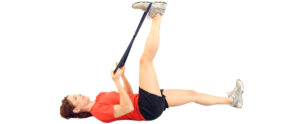
- This exercise stretches the entire back of your hip & leg from your buttocks & into your calves. Lie on the ground on your back, & lift your left knee to your ribs. Grab the back of your knee, & point your knee so that it faces toward your right shoulder or the right side of your chin. Slowly extend your leg straight up, & flex your left foot toward your right shoulder. Hold the stretch for 5 to 6 deep breaths. Repeat the stretch on the opposite leg.
Strengthening exercise of the Gluteus medius muscle
- Buttocks
- Knee to the opposite shoulder
- Side Leg Raises
- Prone Straight Leg Raises [ hip extension ]
- Glute bridge with band
- Seated hip abduction with resistance band
- Spiky ball roll on glutes
- Bridges
- Knee to Chest
- Downward-Facing Dog
- Pigeon Pose
- Clamshell exercise
- Leg bridge exercise

- Buttocks:
- The starting position for the exercise is supine.
- Patient Lay on to the back.
- Then bring the affected leg up to the right angle.
- Grasping the with the help of both hands behind the thigh.
- Then locking to the fingers of the head.
- Do the take unaffected leg & place to the ankle joint against to the knee joint.
- This exercise Repeat to the opposite sides.
- Do this exercise 3 times in 1 session.
- Then do the 3 sessions per day.
- Knee to the opposite shoulder:

- The starting position for the exercise is the supine position.
- The patient is lying on the back with both legs extended & feet flexed upward.
- Then Bend to the right leg & clasp both hands around the knee joint.
- After that Gently pull the leg across the body toward the left shoulder.
- Hold this exercise position for 30 seconds.
- Push the knee joint so that the leg is returned to the starting position.
- Do this exercise 3 times in 1 session.
- Then do this exercise 3 sessions per day.
3. SIDE Leg Raises (hip abduction) exercise
- The starting position for the exercise is the side-lying position.

- The patient is lying on one side with the legs stacked.
- The patient is bent to the bottom leg for support.
- Then Straighten to the top of the leg and maybe upraise to 45 degrees.
- Hold this exercise position for 10 seconds & then relax.
- Then Repeat this exercise 10 times in the 1 session.
- Do this exercise in 3 sessions per day.
- Woman doing Side Leg Raise Exercise with lying in 2 Step on the blue mat. Illustration about Thighs Workout.
4. Prone Straight Leg Raises (hip extension) exercise :

- The starting position for the exercise is the prone position.
- The patient Lie to flat on their stomach.
- Must be Keep the legs straight.
- Then Tighten to the muscles in the bottom & then the hamstring muscle of the one leg.
- One leg is lifted toward the ceiling.
- Hold this exercise position for 10 seconds.
- Repeat this exercise 10-15 times in 1 session.
- Do this exercise in 3 sessions per day.

5. Glute bridge with the band:
- The starting position for the exercise is the supine position.
- Place a small & tight resistance band around the calves.
- The patient is lying on their back & lifting their hips.
- Must be Keep tension in the band & tap the hip joint down to the floor before raising the hip back up again.
- This is important to keep the spine straight & do the movement from the hip joint.
- Repeat this exercise 10 times in 1 session.
- Do this exercise in 3 sessions per day.
6. Seated hip abduction with resistance band:

- Starting position is the sitting position.
- The patient is Sitting on the floor & placing the resistance band around the calves.
- Bend the knee joint & keep your feet on the floor.
- Then Place the hands slightly behind the patient.
- Must be Keep the back straight back & press the legs out to the sides as they externally rotate the hip joint.
- Then Gently & with the control, bring the legs back together.
- Repeat this exercise 10 times in 1 session.
- Do this exercise in 3 sessions per day.
7. Spiky ball roll on glutes

- The starting position for the exercise is the supine position.
- Use the spiky ball to roll out the tight muscles into the buttock.
- Then Roll the ball around to the fleshy part of the buttock for 30 seconds 1 time.
- Do this exercise 10 times in 1 session.
- Perform this exercise in 3 sessions per day.
8. Bridges :

- The starting position of the patient is in the supine position.
- The patient is lying on the back with the knees bent.
- Then patient feet are touching the floor.
- After that Raise the hips toward the ceiling.
- Must be kept back into the straight line with the knees joint & shoulders joint.
- Hold this exercise position for 10 seconds.
- Do this exercise 10 times in 1 session.
- Perform this exercise 3 sessions per day.
9. Knee to Chest :

- Starting position is supine.
- Lie onto the back.
- Starting with the left or right knee.
- Use the hands to gently pull by to the bent knee toward the chest.
- Hold for 10 seconds.
- Repeat this knee-to-chest exercise with to the opposite knee.
- Repeat this exercise 10 times per session & 3 sessions per day.
10 Downward-Facing Dog

- Start this exercise with on to the hands & knees.
- Then press into the hands as far as to the lift of the hip joint toward the ceiling.
- Drop to the head down to the bring the ears into the line with the upper arms & chin all to the way into the toward the chest.
- Bend to the knee joint for the tilt of the pelvis slightly the forward.
- Then move to the body through to any variations of to the feel for to the appropriate.
- Hold this yoga pose for up to 1 minute.
- do this yoga pose 3 times a day.
11 Pigeon Pose:

- Starting with the all fours limb.
- Move the right knee joint toward to right wrist then place the shin on the floor.
- Then Move to the right ankle toward to left wrist.
- Slide the left leg back, point the toes & keep the hip joint facing forward.
- Then Extend the spine.
- Gently walk the hands forward.
- Hold this position for 5–10 breaths.
- Then return to the starting position.
- Switch the legs & repeat.
- Clamshell exercise
- Do this yoga the 3 times per day.
- Lie on your side, with legs stacked & knees bent at a 45-degree angle.
- Rest your head on your lower arm, & use your top arm to steady your frame. …
- Engage your abdomen by pulling your belly button in, as this will help to stabilize your spine & pelvis.

13. Leg bridge exercise:

- Tighten your abdominal & buttock muscles.
- Raise the hips up to create a straight line from your knees to shoulders.
- Squeeze your core & try to pull your belly button back toward your spine.
- Slowly raise & extend one leg while keeping your pelvis raised & level.
- Hold.
- Return to the starting position with the knees bent.
- Perform the lift with the other leg.
14. Standing side bend exercise

- Using a wall for balance, stand with one side of the body to a wall.
- Cross the leg farthest from the wall in front of the other.
- Place one hand on the wall & the other on the hip. Then lean your upper body away from the wall, & push your hip toward the wall.
- Hold for 20 to 30 seconds, then repeat on the other side

- Weighted deadlift
- Stand with your feet parallel & hip-width apart. If you feel comfortable, hold light dumbbells.
- Keep your spine long & your gaze forward. Your shoulders should be back & down.
- Squeeze the glutes as you fold from the hips, bending the knees so that your seat reaches back past the heels. Resist the urge to round the spine in order to “give in to the weight.”
- Allow your glutes & belly to control the descent & ascent.

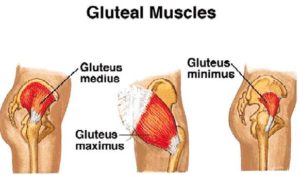
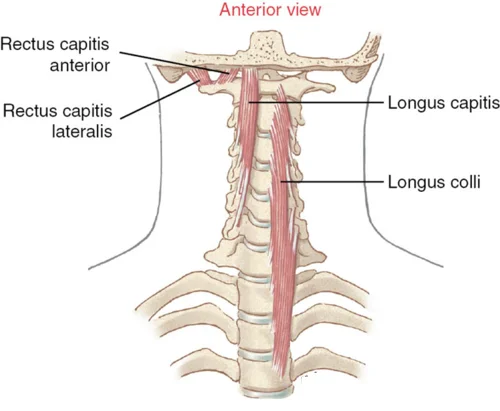
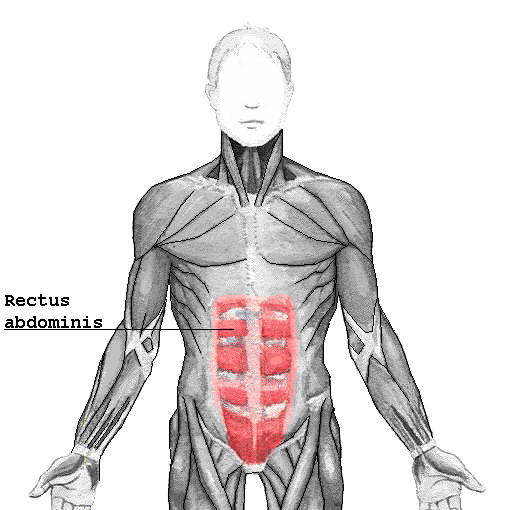
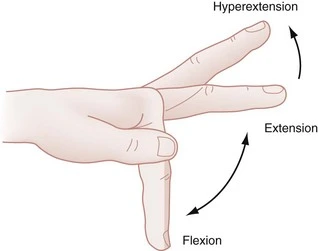

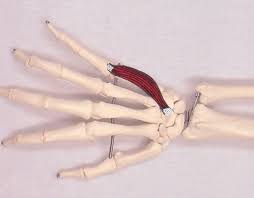
8 Comments